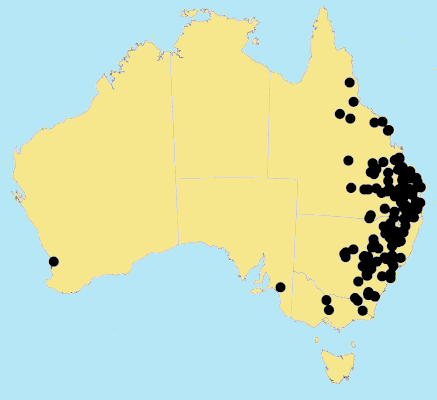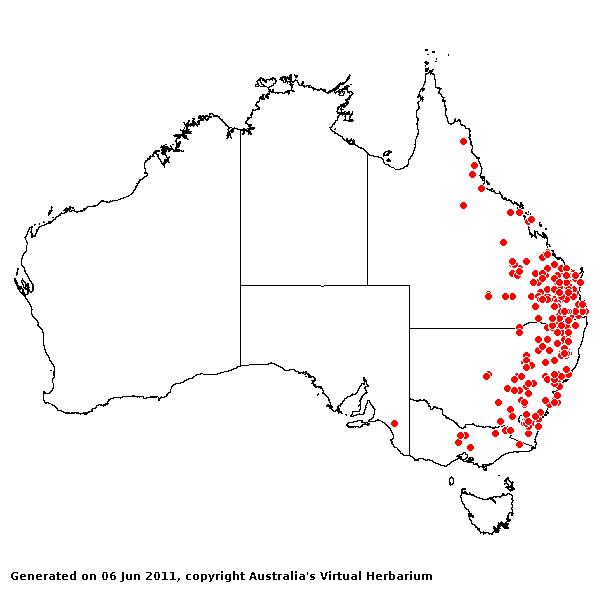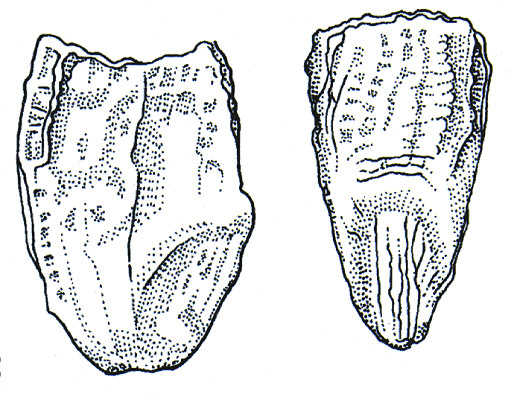Sporobolus creber DeNardi. Contr. N.S.W.Natl. Herb. 4: 406 (1973).
Classification. (GPWG 2001) : Subfamily Chloridoideae. Cynodonteae.
Type of Basionym or Protologue Information: HT: W.J.F. McDonald NSW-121997, 20 May 1971, Australia: New South Wales: Warrumbungle Range, c. 30 mi E of Gulargambone (NSW-121997; IT: BRI, K, L, NSW, US-2884167, US-2892244).
Key references (books and floras): [2002] D.Sharp & B.K.Simon, AusGrass, Grasses of Australia, [2008] S.W.L.Jacobs, R.D.B.Walley & D.J.B.Wheeler, Grasses of New South Wales (377).
Illustrations: [2008] S.W.L.Jacobs, R.D.B.Whalley & D.J.B.Wheeler, Grasses of New South Wales, 4th edn (377).
Habit. Perennial. Rhizomes present, short. Culms erect, 14–140 cm tall, 2–3 -noded. Mid-culm nodes glabrous. Lateral branches simple or sparsely branched. Leaf-sheaths glabrous on surface. Ligule a fringed membrane or a fringe of hairs, 0.2–0.5 mm long. Leaf-blades linear, flat or conduplicate or convolute, 7–45 cm long, 2–3 mm wide. Leaf-blade surface scabrous, glabrous.
Inflorescence. Inflorescence compound, a panicle. Panicle linear, 18–60 cm long, with spikelets clumped along branches.
Spikelets. Spikelets pedicelled. Fertile spikelets 1-flowered, comprising 1 fertile floret(s), without rachilla extension, lanceolate, terete, 1.25–1.75 mm long.
Glumes. Lower glume elliptic or oblong or ovate, hyaline, without keels, 0–1 -nerved. Upper glume lanceolate or ovate, 0.6–1.2 mm long, hyaline, without keels, 0 -nerved.
Florets. Fertile lemma 1.2–1.75 mm long, without keel, 1 -nerved. Palea 2 -nerved. Palea apex entire. Anthers 2. Grain 0.5–0.85 mm long.
Continental Distribution: Tropical Asia and Australasia.
Australian Distribution: Western Australia, South Australia, Queensland, New South Wales, Victoria.
Western Australia: Dale. South Australia: South-eastern. Queensland: Burke, Burnett, Cook, Darling Downs, Leichhardt, Maranoa, Moreton, North Kennedy, Port Curtis, South Kennedy, Warrego, Wide Bay, Mitchell. New South Wales: North Coast, Central Coast, South Coast, Northern Tablelands, Central Tablelands, Southern Tablelands, North-Western Slopes, Central-Western Slopes, South-Western Slopes, North-Western Plains. Victoria: East Gippsland, Midlands, Riverina.
Notes. Has inflorescence branches shorter than adjacent internodes, contrasting with S. elongatus where the inflorescence branches are as long or longer than the adjacent internodes. Despite the reasons given for separation from S. elongatus (De Nardi 1973), there are some herbarium specimens that appear to be intergrades. Examples of intergrades are Hubbard 8043 and Hubbard 8281.
Native; found along the eastern half of Qld, N.S.W. and Vic., and N to S from Cooktown to mid Vict.; isolated occurrences in S.A. and W.A. Grows in most situations but probably more common in cleared land. Woodland and native grassland; flowers all year.




